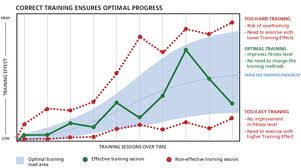For all of human history up until that day, obstetricians -and no doubt parents- had wondered about what was really going on in the womb in those last hours before the baby was born. That was the time of great mystery. If only they could gain a deeper insight into the fetal condition.
 |
| The dawn of a new era |
Everyone was holding their collective breath in anticipation of how the baby was going to come out. Was it going to be OK or would it suffer irreparable damage due to ill effects of vigorous contractions or a dangerous passage through the narrow birth canal? There were only very indirect methods to gain any insight. Until the fetal monitor appeared. Now deeper insight was here.
Suddenly overwhelmed by an influx of data -albeit extremely modest by today's standards- obstetricians were quick to gather, analyze, tabulate and catalog the various waveforms, rhythm changes and impulses that were streaming out and providing a continuous real time view of the baby's heart rate. There were early decelerations, late decelerations, rapid decelerations, slow decelerations, and other changes to map, analyze and explain. Soon journals were filled with theories floating around trying to explain what it all meant.
For us as students, it meant pages and pages of tables added to the obstetrics syllabus. Faced with the task of memorizing all this stuff and my inherent laziness-then more pronounced as befitting a true student-, I tried to discover a pattern that would be useful in data reduction -or compression. Fortunately, it did not take me very long to find such a pattern. Regardless of what the various indicators (ECG, blood gases, etc.) said, there was only one solution: get the baby out. Even if the indicators were in doubt, getting the baby out was the solution. You could never go wrong getting the baby out quickly.
Not to be overly cynical but getting the baby out quickly had been the OB's mantra since the start of the profession. So what really changed? Well for one, now we had tons of data and graphs to show why we had to get the baby out quickly.
Fetal monitoring became a big contributor to the popularity of caesarean section. The other big contributor was convenience and maximizing profits. But at the very least, now we had hard data to go hand in hand with convenience and better fees.
 |
| Fetal heart rate during pregnancy |
Why do I bother telling you this on a cycling blog? Because I have a strong sense of deja-vu. The enthusiasm and hype surrounding power, power meters and training with power is very similar to what happened back then. And it will only get worse once exercise physiologists get a deeper insight into the pedal cycle (the holy grail of cycling). Soon the new Polar/LOOK power pedal will open another treasure trove of data and potential analyses. Look for quadrant analysis squared!
 |
| Training |
Perhaps one other fact needs to be emphasized. What has fetal monitoring done to enhance birth related issues? Was there a big dip in morbidity and mortality associated with births in the latter part of the previous century? Granted, you won't find a single OBGYN who is not convinced of the fantastic and deeply beneficial effects of birthing with monitors, much like you won't find a single coach who isn't convinced of the wonders of training with power.


No comments:
Post a Comment